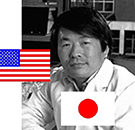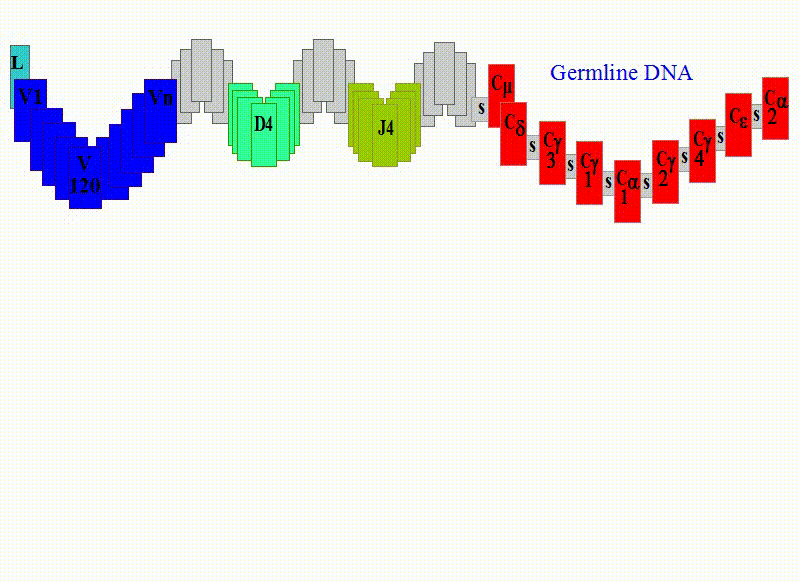
REGULATION OF IMMUNE RESPONSESB-cell IGH Recombinations |
 |
In 1987 S. Tonegawa (Japan, USA) won the Nobel Prize for the research on the genetic mechanisms of antibody diversity. |
|
After antigenic stimulation and priming the primed B cell DNA is composed of a final gene repertoire to be
transcripted onto mRNA and translated onto a peptide chain. During isotype switching, IgM's H chain must be
replaced by a selection of the Cγ, Cα or Cε gene, which is achieved by the use of switch regions.
Antibody diversity allows the immune system to structurally specify the antigen-binding sites of an antibody to
a causative antigen. During an advanced B-cell-mediated immune response, antibody diversity is generated by
the following mechanisms: ©V.V.Klimov
|
